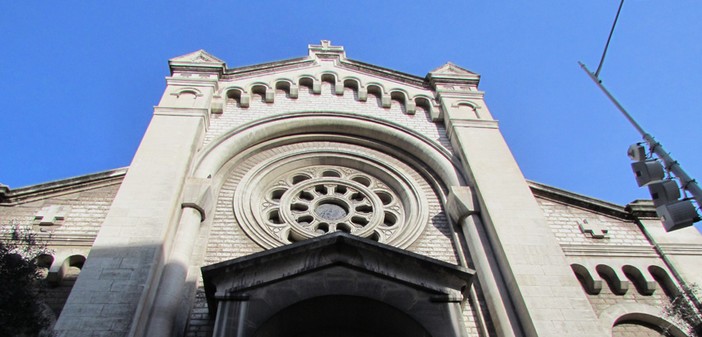The Buffa district, the one crossed by travelers coming from France at the end of the 18th and early 19th century, was a vast field planted with lemon and orange trees and dotted here and there with fishermen’s huts. The road coming from the Var, which was then the border, led into the city.
Nice began a bit at the Croix de Marbre and especially at the Paillon. This western district was energized by winter visitors; the English built their villas, their church, and their cemetery after the fall of the Empire and the return of the County to the House of Savoy. The Campo Longo, the Long Field, transformed and urbanized.
At the same time (18th-19th century), near the future Gambetta Boulevard, there was a small chapel dedicated to Saint Peter. This district bordered the coastline, and the chapel soon became known as Saint Pierre d’Arène, (aréna in Niçois meaning sand and by extension: the beach).
This building was constructed at the end of the 18th century following the will of Father Don Massot signed on December 31, 1762. In this notarized document, the testator bequeathed land to the white penitents, charging them with erecting a chapel there. It became a parish in 1804 and proved too small to accommodate the thousand inhabitants of the district.
The building erected on Father Massot’s land could only hold about fifty people. Between 1840 and 1846, the nave was lengthened and the choir widened. After 1860, there was again a need to consider enlarging this chapel. The municipality laid out new traffic routes and opposed an expansion plan in 1870. With the prefect’s authorization, work resumed in August 1874. The new building was delivered for worship in 1876.
In 1908, Father Ferrier became the pastor of Saint Pierre d’Arène, replacing Father Dupuy, who was appointed to Grasse. Saint Peter’s was still decidedly too small. The new pastor had grand visions, thinking not of an enlargement, but of demolishing the old church to build a new one.
In 1912, the city authorized the work. The first stone was blessed and laid on January 18, 1914. Due to the war, construction slowed. The new church was partially completed in 1925, adjacent to the old building, and the congregation was transferred there on March 22, 1925. The entrance was then via Rue de la Buffa with two side accesses: Rue Cronstadt and Rue Sainson.
Father Ferrier died on February 9, 1936, and Father Rua, the new pastor, would complete his work. The old church was demolished in 1935, and the completion of the new building was finished shortly after Father Ferrier’s death, who was the initiator and builder of this church.
During the last war, Father Rua hid Jewish children, including the future writer Joseph Joffo. Saint Pierre d’Arène became the dominant hub of this thriving district, and the successive pastors knew how to enliven their church and embellish it, each leaving their mark.
Father Cauvin remodeled the choir in response to Vatican II, Father Laurenti sought to improve the acoustics, and Father Fiorini restored the crypt, now a cultural forum named Jorge François, a nod to His Holiness Pope Francis.
Thierry Jan


